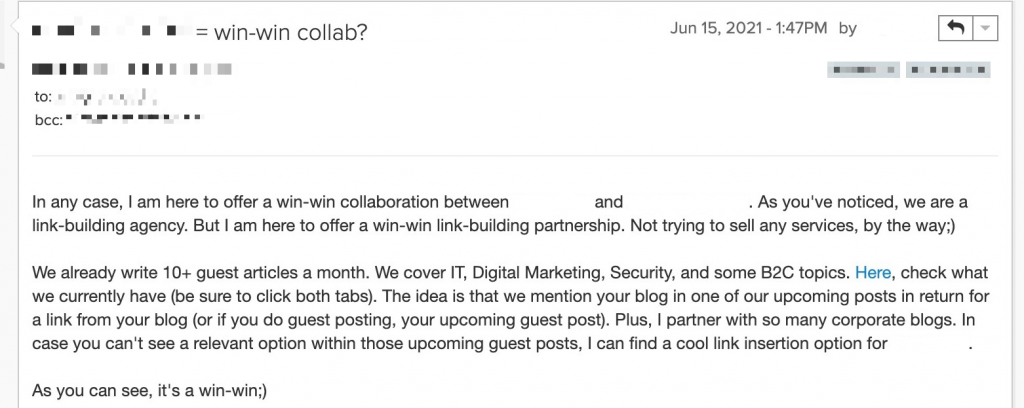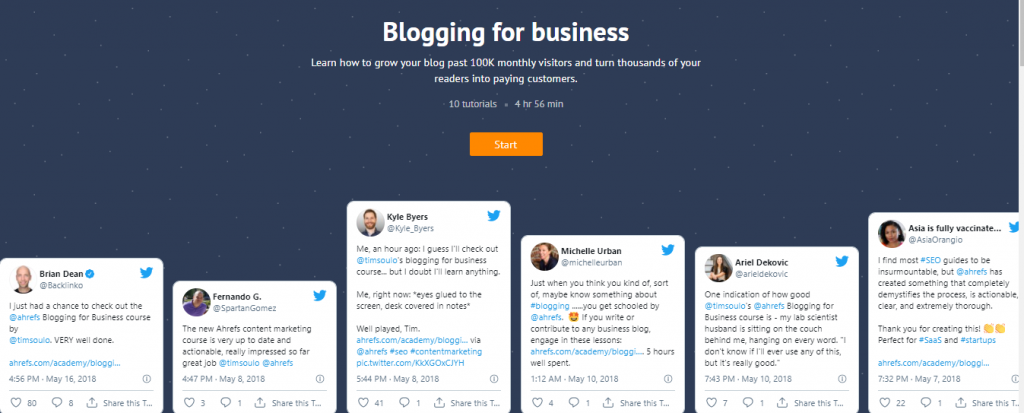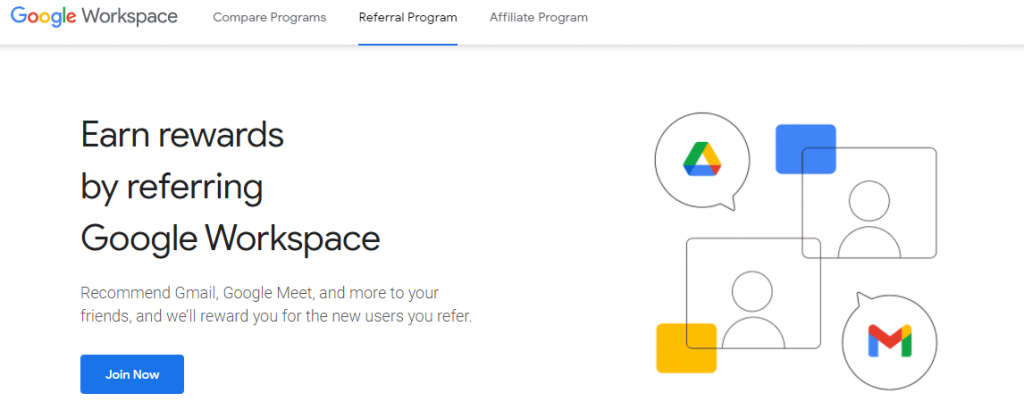How to Do Outbound Lead Generation in 2022
Outbound lead generation has quite an unusual reputation. To this day, some marketers consider it obsolete. However, you can’t deny its importance in digital marketing.
The best part about this strategy is that it helps you reach your target audience immediately, while inbound techniques take some time to deliver tangible results. PPC ads alone can drive massive amounts of traffic to your website.
What does it take to create an optimized outbound lead generation process in 2022?
We’ll attempt to answer this and many other questions in our comprehensive guide. Let’s dive in.
What is Outbound Lead Generation?
Before we jump into the strategies and examples, let’s take a look at the definition and consider the goals this strategy involves.
Outbound lead generation is a digital marketing and sales strategy of finding and engaging with customers that fit your ideal buyer profile but don’t know about your product yet.
The meaning and nature of this strategy are twofold. On the one hand, when you generate outbound leads, it may seem like a hard sell. On the other hand, this strategy helps you target potential buyers faster.
Difference between Inbound and Outbound Lead Generation
Businesses often use both sales models in tandem, but they involve different lead acquisition strategies.
As we know, outbound lead generation is about coming to the customer first. Thus, outbound leads are sales prospects that appear as a result of the contact initiated by a business.
In its turn, inbound lead generation is a lead acquisition strategy where you earn a prospect’s attention step by step. Inbound leads find you first and initiate contact because your product interests them.
Inbound vs. outbound lead generation: which one is more valuable?
The difference between inbound and outbound lead generation is drastic, and each of these strategies has its own benefits.
If we talk about inbound lead generation, it has a number of considerable advantages:
- More efficient lead qualification. Inbound lead generation brings more qualified leads since the prospects come to you first.
- Better sales. You get more sales with the inbound model as it allows for an easier transition from a marketing-qualified lead to a sales-qualified lead.
- Improved brand recognition. Inbound lead generation equals better brand awareness because it’s focused on organic channels more.
Overall, inbound lead generation is about building trust with your prospects first and then nurturing them to become your loyal customers.
On the other hand, outbound sales and marketing also has a few considerable benefits:
- A shorter sales cycle. This strategy generates leads faster, especially when you know that they are ready to buy your product or service right away.
- Faster access to new markets. If you expand your business overseas, you can test the waters with outbound digital marketing strategies to see if there’s a demand for your product.
- More brand awareness. Outbound sales techniques spread the word about your brand faster than inbound. You can introduce your brand during one conversation and won’t have to spend months fighting for prospects’ attention.
What do stats say about the importance of outbound lead generation in 2022?
A study of Italian and Romanian click and mortar companies has shown that the outbound sales model is great for generating traffic. Besides, it proved the importance of this strategy for brand awareness and recognition, both online and offline.
So, which strategy should you choose, inbound or outbound?
The best solution is to opt for both options at the same time.
First of all, inbound and outbound lead generation have overlapping zones, such as email marketing, online and social media ads.
On top of that, both strategies can and will underperform. It takes quite a while to generate leads with a blog. But if you advertise your blog post through Google Ads, you will be able to get more sales prospects faster.
Therefore, both strategies deliver the best results when used in tandem. Outbound techniques are better for short-term campaigns, and inbound strategies work best long-term and cost less.
5 Steps to Optimize Outbound Lead Generation Process
You should approach outbound lead generation with a proper plan in place. This way, you’ll save a lot of money and get as many sales prospects as you planned to attract.
In this section, we will take a look at a few tips and suggestions on how to create an optimized outbound sales plan that caters to your business’s needs and brings profitable results.
1. Set your goals and KPIs
Every marketing strategy starts with a clear goal, and the outbound lead generation process is not an exception.
Outbound lead generation can have the following goals:
- Deliver your core message to the target buyer.
- Increase brand awareness and recognition.
- Support other tasks and projects as part of the product launch.
- Provide back-up help in case your lead generation program hasn’t performed well.
It is possible that your outbound lead generation strategy will involve several of these goals at once. But before you set any objectives, make sure you have the resources to execute an outbound lead generation campaign.
Once the goal is clear, you can move on to defining the KPIs for your outbound sales strategy. Here are some of the basic metrics that can get involved:
- Return On Investment (ROI) – initial value of the investment gets subtracted from the final value of the investment.
- Conversion rate – the number of conversions is divided by the number of total interactions with content or an ad within the same time frame.
- Customer acquisition cost – the general sum spent on customer acquisition is divided by the number of customers acquired within a specific time frame.
- Customer lifetime value – the average order revenue is multiplied by the time (months, years) a customer has spent with a business.
- Return rate – the number of leads returned is divided by the total number of delivered leads.
- Revenue per lead – the total number of revenue from leads is divided by the total number of acquired leads.
With both B2C and B2B outbound lead generation strategies, it makes sense to measure time to close a lead, which is the average time it takes the lead to become a paying customer divided by the total number of closed sales.
2. Define the needs of your target audience for each sales funnel stage
Lead generation is not about only targeting the leads that have never heard about your company before. Your potential buyer might have heard about your company before but hadn’t purchased because they didn’t know enough about your company.
Outbound lead generation is about the same thing – you should recognize the needs of your audience at each stage of the sales funnel and target them accordingly.
A sales funnel usually consists of the following stages: awareness, discovery, evaluation, intent, and purchase. Let’s discuss each of them individually.
1) Awareness
The sales funnel starts with the awareness stage. A lead has a problem they want to solve, but they don’t know your product can help them. Thus, your goal is to make your potential prospects aware of your brand, and how your product can help them with their pains.
Outbound marketing solutions for this stage may include a PPC campaign or a social media ad campaign. For instance, on Facebook, you can add your target audience’s demographics and a list of their interests and behaviors to make your ads more targeted:

While creating the description of your target audience, watch the audience meter at the bottom. The more specific your description is, the more leads you will be able to attract, given that your ideal buyer description targets the right audience.
2) Discovery
Let’s say your PPC campaign worked, and a prospect is now aware of your brand. Next, they want to learn more about your product, and your goal is to provide more information about it.
In outbound sales generation, any ads will work at this stage, but video ads will perform best as they will give more of a sneak peek into how your product works. You can also leverage syndicated content and posts in online communities to help prospects learn more about your brand.
3) Evaluation
At this stage, your prospect has learned enough about your company to start evaluating its potential to help solve their problem. Your task is to give them even more information about your product.
The evaluation stage in your outbound sales plan should include both outbound and inbound tactics. For instance, you can use retargeting ads to attract the prospects who’ve visited your website or check out your syndicated content. The ad can redirect them to a free trial, which will give them more insights into your product.
4) Intent
At the Intent stage, your prospect is planning to buy your product, but they may be hesitating and comparing it to solutions offered by your competitors.
Your outbound marketing solutions may include paid advertising and retargeting. You also can create a purchasing intent through events, both online and offline. During an event, you can talk more about the benefits of your product and demonstrate how it works.
5) Purchase
This is the final stage of the sales funnel, where your prospect becomes your customer. Your goal is now to work on retaining them for as long as possible.
Here, you can unite outbound lead generation efforts with inbound tactics. For instance, you can use PPC ads with a selection of products your buyers reviewed while also sending them emails with the listings of products that went on sale.
3. Choose outbound lead generation channels
When you’ve identified the needs of your audience at each sales funnel stage and selected the content to cater to their problems, your next move is to choose outbound lead generation channels.
The outbound lead generation process can rely on the following channels:
- TV ads
- Newspaper ads
- Telemarketing (also known as cold calling)
- Email marketing
- Direct mail
- Events and trade shows
- PR and press releases
- Newsletters
- Branded merchandise
As you see, you have quite a few options to choose from. Besides, some inbound lead generation channels such as landing pages can also be used as outbound, for instance, if you feature them in a PPC campaign, like in SEMrush’s example below:

The key point here is to keep the customer at the center of it all and make your decision based on your audience’s needs. For instance, B2B leads may be less responsive to referral marketing than B2C leads.
4. Personalize your lead generation efforts
Personalization is not a random buzzword – it directly impacts the lead-to-customer conversion rate. But the thing about personalization in outbound marketing is that it’s extremely hard to execute.
Why?
Most outbound lead generation strategies presume that you have a target buyer description and will use it to contact the prospect. This is a scenario for cold calling, for instance, where you have a list of potentially interested buyers and reach out to fuel their interest.
Fueling a prospect’s interest – that’s where you start personalizing your outbound lead generation strategy. If you’re making a cold call, prepare a list of questions in advance to learn more about your prospect’s needs. Asking the right questions will help turn a hard sell into a meaningful conversation.
And what about emails or social media outreach?
You need to collect as much information about your prospect as possible. Learn about their job position, the product their company works on, latest activity, events, conferences – you can use anything that can connect you with them. This is especially useful for B2B businesses.
All in all, personalization in outbound marketing boils down to tracking your target buyer’s behavior. Don’t focus your outbound lead generation efforts on the demographics only – make your target customer persona as detailed as possible with psychographics as well.
5. Plan lead nurturing strategies
The outbound lead generation process doesn’t end when you get new prospects. Once you catch a lead, you need to work on converting them to become a paying customer. And that’s where lead nurturing enters the scene.
Both inbound and outbound lead generation should involve various lead magnets, such as:
- free trials
- live demos
- webinars
- gated content
- chatbot conversations
- newsletters
- coupons and discounts
These and many other strategies can be used in campaigns. For instance, you can use a checklist or template in a PPC ad to drive more clicks and get more leads.
7 Best Outbound Lead Generation Strategies and Examples
Now, let’s talk about actual ways of generating outbound leads. As you know, outbound lead generation involves traditional media, such as TV and radio, as well. We will skip these channels and focus more on online lead generation strategies and tips.
1) Cold emails
A cold email is an email you send to a potential buyer who hasn’t heard of or has little knowledge of your brand. Basically, you and your future client don’t know each other yet, and a cold email is creating an opportunity to start building a meaningful relationship.
How effective are cold emails?
As a strategy to generate leads, cold emails have quite an ambiguous reputation. On the one hand, most prospects will consider your cold email invasive (much like all other outbound lead generation techniques). Don’t be surprised if you get no response to your email right away—most likely, the prospect will reply after a couple of follow-ups. But that’s not guaranteed.
On the other hand, statistics claim that cold emails have a 15% conversion rate. Although it’s 3% down from what the conversion rate was in 2018, it’s still an impressive result for a strategy that some consider ineffective and obsolete.
What makes a cold email effective?
There are a bunch of factors you need to take into account:
- an email subject line
- the right contact
- clarity of the text
- personalization
- no spam
- follow-ups
Among these factors, personalization definitely stands out. It is especially important in B2B lead generation, where your task is to target the right contact and engage them in a conversation by personalizing your email around their interests.
Personalization is also about making the right offer. Your task is to do research about your prospect and their business (for outbound B2B lead generation) and tailor your message to their needs, like in this example:

The email offers a link building partnership and provides a personalized selection of services based on what the prospect’s company currently needs.
Outbound email lead generation only works if you put effort into personalization. Hence, repurposing cold email templates, although widespread, can be one of the reasons why you’re not getting new leads.
Personalization can include anything from the prospect’s interests to funny memes. But make sure you don’t overflow your email with too many humorous images—use them only when relevant.
2) Cold calling
A cold call implies an unsolicited phone call from a business to a potential customer in an attempt to sell products or services.
Telemarketing (another name for cold calling) has been around for ages and is one of the long-present outbound lead generation techniques. Although it’s less popular now (only 27% of B2B sales reps consider this strategy effective), it is still a legit way to target and engage potential buyers.
What makes a good cold call?
- A thorough ideal customer profile (ICP) based on your existing customer base and in-depth market research.
- A rich list of contacts (either purchased from a lead generation company or put together by your sales research specialist).
- A thorough script with straightforward questions and personalized offers (beware of turning it into a monologue—let your prospect speak; their answer will give you hints as to what product suits their needs better).
- A central message that should be written from your prospect’s perspective.
Cold calling is a solid technique to attract prospects, but it should be used in combination with other lead generation techniques, both outbound and inbound. Also, if you decide to do cold calling, make sure to use warm calls as a follow-up after you introduce a prospect to your brand.
3) Syndicated content
Syndicated content is content that has been republished on multiple websites apart from its original source. The goal is to improve the content’s visibility and attract new potential buyers.
You will know that the content has been syndicated if you see the following paragraph at the beginning of it:

Content syndication is not the most obvious lead generation strategy, and yet it is among the most effective methods to get more leads. It’s a chance to tap into another website’s audience and interest them in using your product or service.
That being said, content syndication is a pretty fragile technique, and there are a few rules you should follow to make it work:
- Don’t make content syndication the pinnacle of your content strategy. Choose content that has already been bringing steady traffic and would be relevant for the target website and its audience.
- Choose websites with an audience similar to yours. This is the only way to get relevant leads.
- Go for websites with higher authority. Since they will include a link to the original source of content, it will give you some nice link juice.
Speaking about the first point, Curata advises to make syndicated content 10% of your entire content strategy, with the focus on creating original content. This way, you will always have original, interesting pieces to share with authoritative websites and get relevant leads.
4) Social media outreach
Social media outreach is a strategy of using social media channels to promote a product or service to prospects who, most likely, haven’t heard about your brand before.
Why do you need social media outreach if you’re already doing cold emails?
The chances that a lead will see your message are higher on social media. Besides, it’s easier to connect with the right prospect, which is especially important for B2B companies who are looking for the fitting contact to offer a partnership.
When you find a relevant lead, don’t DM them right away. Instead, browse through their social media account to find hooks that you could use to personalize your conversation, like in the example below:

Before you tap into the benefits of social media outreach, it makes sense to put together a list of relevant prospects. The prospects should reflect your ICP and come from the same industry. For instance, if your B2B brand is looking for a partnership with SaaS companies, limit your outreach accordingly.
5) Events
Events are among the best practices in outbound lead generation. Not only is it the best way to fully inform potential buyers about your product, but, in some cases, it is a great way to test it out.
The best part about running an event is that you have a myriad of options to choose from:
- webinars
- online courses
- live streaming events
- trade shows
- seminars
- conferences
- VIP experiences
- festivals
- product launch parties
- networking sessions
The choice of the event type will depend on the audience you want to connect with and your event budget. An online course is an excellent option for a business of any size as you get to connect with prospects, educate them and show how your product can help solve their problems. Ahrefs’ Blogging for Business course is a perfect example:

The course is designed to teach blogging newbies how to create optimized content. But during the course, you also get to check out how Ahrefs solves various SEO-related tasks. It’s a great opportunity to generate outbound leads.
6) Paid advertising
Paid advertising means that you pay the owner of ad space for using it. It’s also known as pay-per-click advertising, where you pay the publisher when your ad gets a click.
Paid ads are the most popular technique in outbound lead generation, bringing you the following benefits:
- targeted reach
- first-page exposure (Google Ads, in particular)
- immediate and consistent traffic
- an excellent branding opportunity
- easy-to-measure analytics
The key to successful paid advertising is, as with other lead generation strategies, to make your ICP as detailed as possible. That includes thorough research on the demographics, psychographics, and customer purchase patterns.
A comprehensive ICP matters a lot for social media ads, where you often target potential prospects based on their interests. Here’s a good example of an Instagram ad that caters to a specific audience – people who are looking for natural acne treatment:

The key to a successful PPC campaign is a proper goal which you should define based on the budget and resources available to you. It is possible to run a PPC campaign on almost any budget, but your entire traffic should not rely on online ads alone.
7) Referral marketing
Referral marketing is a strategy where a brand encourages existing customers to recommend its product to their friends and family. In return, they get some sort of reward – a free product subscription, a discount, etc.
Referral marketing belongs to outbound lead generation strategies because it is based on word-of-mouth— potential prospects know very little about the brand but get to learn about it through brand advocates.
Why should referral marketing be a part of your lead generation strategy?
Here are a few convincing reasons:
- You get highly relevant leads.
- Lead retention will be higher.
- It will be easier to nurture leads acquired through referrals.
- Customer loyalty is higher.
- You have complete control over your referral programs.
Google runs an awesome referral program, asking the participants to promote Gmail, Google Meet, and other products, and get a cash reward:

Referral marketing has proven to be an effective outbound lead generation strategy. It will remain relevant in 2022 and beyond for one good reason – through word-of-mouth, you only acquire customers who are highly interested in your product, which significantly improves customer loyalty.
Will Your Outbound Lead Generation Efforts Pay Off?
This is the question that probably interests you the most right now. That’s fair—outbound lead generation is notably more expensive than inbound strategies. Nevertheless, it doesn’t mean that it’s not worth your money.
To conclude our article, here’s a quick fact for you. PPC ad campaigns get you $2 on average for every $1 spent. It means that paid advertising alone can have a 200% ROI. That’s a good start, even if you’re running on a shoestring budget.
That being said, these are just numbers. The real situation can and will differ depending on many factors, including how precise your ICP is and how well you optimized your inbound lead generation efforts. After all, outbound lead generation brings better results when it’s combined with inbound marketing efforts. So, get these two strategies tuned, and your conversion rates will climb through the roof.

Sona Kalantaryan is a senior digital marketer with a creative past. Big fan of high cinema and well-optimized landing pages. She authors guides by sharing the best practices and does it the right way!




